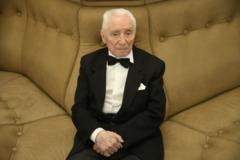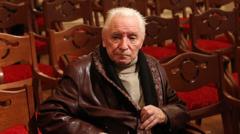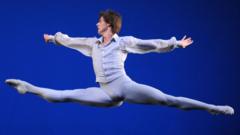Yuri Grigorovich, one of the most celebrated choreographers of the 20th century, has passed away at the age of 98. Renowned for his powerful influence on Soviet ballet, Grigorovich served as the artistic director of the Bolshoi Ballet from 1964 until 1995, leading with what many describe as an iron grip. His groundbreaking productions, including The Stone Flower, Ivan the Terrible, and Romeo and Juliet, left a lasting impact on the art form, revitalizing the role of male dancers in the process.
Born in 1927 in the context of post-revolution Russia, Grigorovich was deeply inspired by classical ballet traditions. His uncle, Georgy Rozai, was taught by the legendary Vaslav Nijinsky, which significantly influenced Grigorovich's journey as a dancer, starting with his solo performances at the Kirov Ballet in Leningrad before he transitioned to choreography. His career at the Bolshoi was not without controversy, culminating in an unprecedented dancers’ strike in 1995 due to disputes over contracts, where a dancer publicly canceled a performance, shocking the audience.
The Stone Flower, marked as Grigorovich's most iconic work, features stirring folk tales complemented by music from Sergei Prokofiev. Following the collapse of the Soviet Union, Grigorovich left the Bolshoi to establish a new ballet company in Krasnodar but returned as a choreographer and ballet master in 2008 amidst a volatile environment at the theater.
In recognition of his contributions to dance, Grigorovich was awarded several prestigious Soviet and Russian honors, such as the title of People's Artist of the USSR and Hero of Socialist Labour. His passing coincides with the death of prominent dancer Yuri Vladimirov, aged 83, which has prompted reflections on their substantial contributions to ballet. Valery Gergiev, leading figure of the Bolshoi and Mariinsky theatres expressed his respect, stating Grigorovich's legacy will continue to be admired for years to come.
Born in 1927 in the context of post-revolution Russia, Grigorovich was deeply inspired by classical ballet traditions. His uncle, Georgy Rozai, was taught by the legendary Vaslav Nijinsky, which significantly influenced Grigorovich's journey as a dancer, starting with his solo performances at the Kirov Ballet in Leningrad before he transitioned to choreography. His career at the Bolshoi was not without controversy, culminating in an unprecedented dancers’ strike in 1995 due to disputes over contracts, where a dancer publicly canceled a performance, shocking the audience.
The Stone Flower, marked as Grigorovich's most iconic work, features stirring folk tales complemented by music from Sergei Prokofiev. Following the collapse of the Soviet Union, Grigorovich left the Bolshoi to establish a new ballet company in Krasnodar but returned as a choreographer and ballet master in 2008 amidst a volatile environment at the theater.
In recognition of his contributions to dance, Grigorovich was awarded several prestigious Soviet and Russian honors, such as the title of People's Artist of the USSR and Hero of Socialist Labour. His passing coincides with the death of prominent dancer Yuri Vladimirov, aged 83, which has prompted reflections on their substantial contributions to ballet. Valery Gergiev, leading figure of the Bolshoi and Mariinsky theatres expressed his respect, stating Grigorovich's legacy will continue to be admired for years to come.











